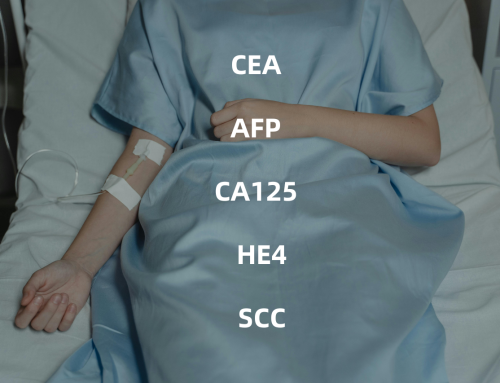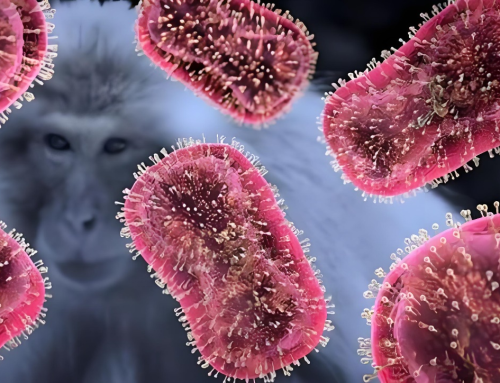What is HIV?
HIV, or Human Immunodeficiency Virus, is a virus that attacks the body’s immune system with the primary goal of destroying and weakening CD4 + T lymphocytes (T helper cells), an important cell in the immune system. The virus belongs to the family Retroviridae and is highly variable, meaning it mutates quickly to evade the body’s immune defenses and antiviral treatment. Since it was first identified in 1981, AIDS has gradually become a major challenge in the field of international public health.
There are two main types of HIV: HIV-1 and HIV-2, which differ in genetic structure, transmission efficiency, geographic distribution, rate of disease progression, and response to treatment. HIV-1 is the predominant virus type in the global AIDS epidemic, accounting for the majority of all HIV infections. It has high variability and can quickly adapt to the host environment, leading to the destruction of the immune system.
HIV infection process?
Source: Public
Pathogenesis and clinical manifestations of HIV
Pathogenesis: HIV mainly invades the immune system of the human body, including CD4 + T lymphocytes, dendritic cells and mononuclear macrophages, etc. The main manifestation is that the number of CD4 + T lymphocytes is decreasing, which leads to the defect of human cellular immune function, thus causing various opportunistic infections and tumors. In addition, HIV infection also leads to an increased risk of cardiovascular disease (CVD), bone disease, kidney disease, and liver dysfunction. When HIV enters the human body, it will reach the local lymph nodes in 24 ~ 48 hours, and the viral components can be detected in the peripheral blood in 5 ~ 10 days, and then viremia occurs, leading to acute infection, which is characterized by a transient and rapid decrease in the number of CD4 + T lymphocytes in a short period of time. Without special treatment, the number of CD4 + T lymphocytes in most infected patients can return to normal or nearly normal levels on its own. Because of the existence of viral reservoir, the host immune system can not completely eliminate the virus, forming chronic infection, including asymptomatic infection and symptomatic infection.
Source: Public
linical manifestations: AIDS is often more insidious in the early stage, there may be no obvious signs, or only mild flu-like manifestations, such as low fever, throat discomfort, musculoskeletal pain, as well as loss of energy, poor appetite, etc., these manifestations are usually ignored.

However, with the subtle evolution of the disease, patients will face more severe immune system challenges, and a series of complex and serious health crises will follow, including but not limited to pneumonia, tuberculosis, cytomegalovirus infection, etc., which are vivid portrayals of the immune system suffering.
What are the methods of HIV testing?
In the process of identifying HIV infection, several core detection methods play a key role, including antibody detection, antigen-antibody combined detection, and nucleic acid detection technology. It is worth noting that the period from HIV infection to the detection of HIV-related markers (such as antibodies, antigens or nucleic acids) in the blood is called the “window period”. Infected persons at this stage, although already infectious, may be temporarily “invisible” due to the limitations of existing detection technology, and it is difficult to be diagnosed. With the passage of time and technological progress, the window period of AIDS testing has been significantly shortened.
Especially the introduction of the fourth generation of antigen-antibody combined detection technology, this innovation can not only explore the traces of HIV antibody and P24 antigen at the same time, but also significantly improve the diagnostic accuracy and timeliness in the early stage of infection, which is more sensitive and reliable than the separate antibody detection. At present, the fourth generation antigen/antibody detection reagent has been used as the standard detection method for HIV screening in the United Kingdom and some other countries.

With the wide application of antiretroviral therapy, many HIV-infected people can effectively control the virus, avoid or delay the arrival of AIDS, and maintain a better quality of life. Therefore, early diagnosis and timely treatment are essential to improve the prognosis of HIV-infected patients.
Reasons for choosing Bio-Mapper HIV antigen & antibody?

Accurate virus detection depends on reliable detection reagents, and reliable reagents depend on reagents with good performance. The HIV raw material products independently developed by Bio-Mapper are diverse and have strict quality control standards. Moreover, the precision, specificity and stability of raw materials are excellent. Our company is also equipped with efficient technical support and services, striving for perfect connection between product quality and after-sales service, becoming the trusted choice of scientific research institutions, diagnostic reagent manufacturers and medical institutions, and playing a positive role in promoting the development of HIV detection technology and AIDS prevention and control.
Bio-Mapper HIV-1 Antigen (Bio-Mapper -AP) Performance Test (CMIA):
Bio-Mapper -AP reagent has better precision.

Bio-Mapper -AP reagent has better specificity

Bio-Mapper -AP reagent has good thermal acceleration stability

Bio-Mapper -AP can pass the HIV antibody national disk.

Uncut Sheet

The misconception of HIV
There are many misconceptions or misconceptions about HIV, and these misconceptions can lead to unnecessary fear, discrimination, and mistreatment of those who are infected. Here are some common HIV myths and corrective information:
1.Myth: HIV can be spread through everyday contact.
Correction: HIV is not transmitted through everyday social contact, such as shaking hands, hugging, sharing utensils, kissing (unless both parties have open wounds), mosquito bites, etc.
2.Myth: People who look healthy can’t have HIV.
Correction: HIV-infected people may have no obvious symptoms for a long time and look completely healthy without treatment or effective treatment.
3.Myth: HIV can be cured.
Correction: Although there is no cure for HIV, the virus can be effectively controlled through antiretroviral therapy (ART), so that the viral load can be reduced to an undetectable level, and the infected person can maintain good health and prolong life. This is called “virological suppression,” not a cure.
4.Myth: People with HIV can’t have healthy children.
Correction: With proper medical intervention, HIV-positive parents can have healthy, uninfected children. This includes anti-viral treatment during pregnancy, caesarean sections and the avoidance of breastfeeding.
5.Myth: HIV only affects certain people.
Correction: HIV infection does not discriminate by gender, age, race, sexual orientation, or socioeconomic status, and anyone can be infected with HIV. HIV should not be associated with specific groups to avoid discrimination.
6.Myth: Being infected with HIV is a death sentence.
Correction: With medical advances, HIV-infected people can maintain a good quality of life by taking medicine regularly, and their life expectancy is close to that of uninfected people.
HIV is no longer a fatal terminal disease, but a manageable chronic disease. Correcting these misconceptions is essential for eliminating misunderstandings about HIV, reducing social discrimination, promoting the integration of infected persons into society and raising awareness of prevention.









